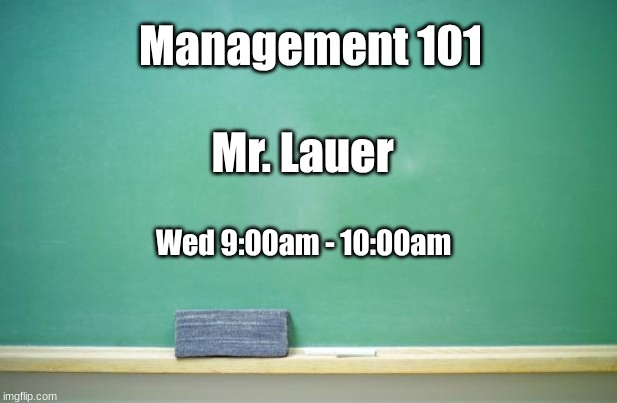
Rob’s Rule of Three: How Leaders Make Decisions When Everything’s on Fire
We’ve all been there. Someone bursts into your office (or sends you a message on Teams) with their hair on fire. “Everything is broken! The system is down! Customers are complaining!”
Your adrenaline spikes. Your brain starts racing. Over the years, I’ve learned that the best leaders don’t rush to react. They don’t speed up, they slow down, assess, and respond with clarity. Ever hear of the OODA loop? Did you know that late commitment is an important element of agility?
My experience handling many a supposed Chernobyl meltdowns has led me to what I call Rob’s Rule of Three. It’s my personal framework that I’ve used for years to successfully cut through the noise and make decisions under stress. You too can be a successful executive IF you can just…
…keep your head when all about you are losing theirs and blaming it on you…
To remind myself, my team and my organization of the imporatance of these rules I wrote them on my whiteboard. When someone brought me a “problem” they were reminded of them.
Rob’s Rule of Three
- Is it really a problem?
- Is it my problem to solve?
- If yes, do I need to solve it right now?
Let’s break this down.
1. Is It Really a Problem?
Panic distorts reality. Panic creates a distorted projection of the future. Our imaginings of possible negative outcomes never really match what actually happens does it?
Many issues that feel urgent in the moment turn out to be noise or minor hiccups. Before reacting, help the person and the organization explain:
- What is actually happening?
- What is the impact? Who is affected?
- What are the consequences if we do nothing?
Many times, the fire is extinquished under the blanket of scrutiny.
2. Is It My Problem to Solve?
As a leader, you can’t and shouldn’t solve everything. Sometimes your role is to delegate, coach, or empower others to handle it. Yes, you probably climbed the ladder to your current perch by personally handling many a crisis. People look at you as a hero. But that’s history. You’re not in the hero business anymore. You are a leader of heroes. Resist the urge to be the hero. It’s a trap. - Who owns this system or process? - Who is closest to the problem? - Is this something no one else is equipped to handle?
If it’s not your problem, hand it off and move on. And sometimes when there is no one else capable of handling the issue, you have identified an organization hole or an opportunity to mentor your replacement!
3. If Yes, Do I Need to Solve It Right Now?
Not everything is a five-alarm fire. Some problems can wait. The universe changes every second Padawan. Feel the force. - Will delaying action cause harm? - Can we mitigate the issue for now in some way and plan a proper fix later?
Most issues can be scheduled into normal workstreams. Reminding people of the process reinforces calm. Reserve your immediate energy for true emergencies.
Scott Adams, creator of Dilbert, once joked about Wally’s Rule - that after three days, most requests are irrelevant. While it’s a comic exaggeration, there’s truth in it: Some problems evaporate if you simply wait.
When you have a cold, if you get lot’s of rest, drink plenty of fluids and have some chicken soup it will go away in 5-7 days. If you do nothing it might take a week.
Why This Matters
When panic strikes, leaders are judged by their ability to stay calm and make sound decisions. The Rule of Three cuts through the noise, reduces reactionary decisions, and reinforces trust within your team.
I have often reminded my team and our internal customers of the team’s track record when there is panic in the air:
“When was the last time we didn’t solve a customer problem? When did we ever leave a system broken? Stop. Think. We’re still here. The business is still running. You are the A-Team! Together we’ll solve this one too!”
Calm is faster. Calm is smarter. Slow is fast, less is more.
Take an Emergency Lightly
This is my personal addendum. “Take an emergency lightly” doesn’t mean ignoring it. It means approaching it with the confidence that you and your team will handle it. Because “that’s sort of what we do”.
So, next time someone runs in with their hair on fire, stop, drop, but don’t roll. Remember the Rule of Three. And take it lightly, while applying a little self affirmation.

- “I’m good enough.”
- “I’m smart enough.”
- “…and doggone it people like me!”
Next post: Hosting a Secure Static Website with S3 and CloundFront: Part III
Previous post: Thar’s Gold in Them Thar Hills!

 www.linkedin.com/in/robert-lauer-1590513
www.linkedin.com/in/robert-lauer-1590513